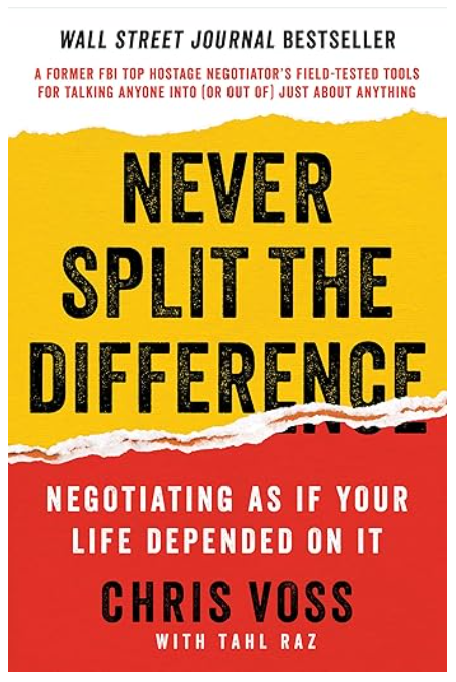Never Split the Difference – Negotiation Like Your Job Depends on It (Because It Does!)
The Workplace Problem: Why Traditional Negotiation Fails
Many people assume negotiation is about compromise—meeting in the middle to keep both sides happy. But in high-stakes workplace situations, splitting the difference often leads to weak agreements that leave both parties dissatisfied.
HR leaders, executives, and managers are constantly negotiating—from handling salary discussions to resolving workplace disputes. How do you get the best outcome without damaging relationships?
What This Book is About
Written by former FBI hostage negotiator Chris Voss, Never Split the Difference challenges the idea that compromise is the best strategy. Instead, it introduces tactical empathy, calibrated questioning, and mirroring techniques to help negotiators gain an advantage without creating conflict.
Voss takes lessons learned from life-or-death hostage situations and applies them to business, leadership, and workplace negotiations.
Key Takeaways for HR and Workplace Leaders
Tactical Empathy Wins Negotiations – The best negotiators don’t argue; they listen and make the other person feel understood.
The "No" Advantage – Instead of pushing for a yes, allow the other side to say no first—it lowers their defenses and makes them feel in control.
Mirroring Creates Connection – Repeating the last 2-3 words of what someone says builds rapport and encourages them to reveal more information.
Use “How” & “What” Questions – Asking “How would we make this work?” shifts people from resisting to problem-solving.
Deadlines Create Pressure—Use That to Your Advantage – People often make concessions under time constraints. If a deadline isn’t real, don’t rush.
Workplace Tools and Models from the Book
The Accusation Audit – A method to preempt objections by addressing them before they come up.
The 7-38-55 Rule – Studies show that only 7% of communication is words—the rest is tone (38%) and body language (55%). Reading these cues is key.
The “That’s Right” Moment – If you can get someone to say “That’s right” instead of “You’re right,” you’ve gained their trust.
Why This Matters for HR and Workplace Leaders
HR professionals and executives negotiate all the time, whether it’s:
✔ Handling compensation & benefits discussions
✔ Mediating employee conflicts
✔ Negotiating contracts, policies, and leadership decisions
✔ Securing buy-in from stakeholders
Unlike traditional negotiation books, Never Split the Difference teaches emotional intelligence techniques that make agreements stronger.
How This Connects to Workplace Assessments and Restorations
One of the biggest issues uncovered in workplace assessments is misaligned expectations—employees and leadership often feel they’re speaking different languages.
By applying negotiation strategies from this book, organizations can:
Improve difficult conversations between employees and management
Build trust during workplace changes and policy negotiations
Strengthen conflict resolution strategies by ensuring both sides feel heard
How Can You Apply This?
➡️ Do workplace negotiations often end in frustration or resentment?
➡️ Are HR and leadership teams struggling to get buy-in on important changes?
Mastering high-stakes workplace negotiations can transform team dynamics, leadership effectiveness, and decision-making.
Where to Buy
Interested in reading Never Split the Difference? You can purchase it here:
📚 Amazon
📚 Penguin Random House

